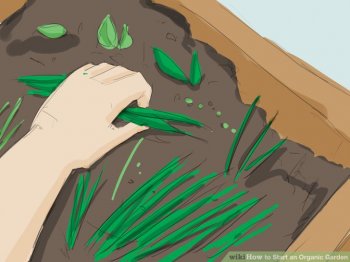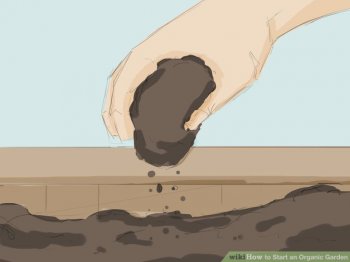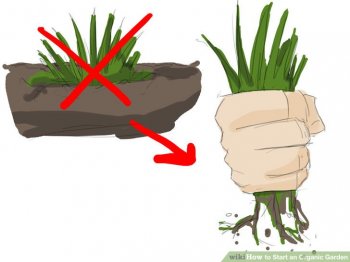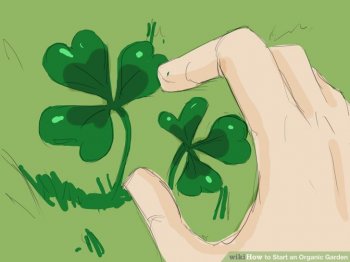

Steps
- Choose a site for your organic garden.
- Think small, especially at first. A small garden takes less work and fewer materials than a large one. A well-maintained 4' by 4' garden can furnish all of the fresh vegetables that one person will eat.
- Don't over-plant. If you're growing food, think in terms of yield, and plan in terms of meals per person.
- Even a window box or a few containers can be a starter garden.
- Compost is the main ingredient for developing rich organic soil. You can use almost any kind of organic material to make compost that will enrich your soil, but the best things to start with are usually right there in your garden: fallen leaves, weeds (preferably before they go to seed) and grass clippings, to name a few.
- Add the right soil. The key to organic agriculture is great soil. Add as much organic material to your soil as you can. This can be from your compost heap.
 Soil that has been built up with plenty of organic matter is good for your garden for a lot of reasons.
Soil that has been built up with plenty of organic matter is good for your garden for a lot of reasons.
- It will nourish your plants without chemical fertilizers, keeping them more natural, rather than encouraging bursts of fast growth that can weaken plants.
- It is easier to get shovels into, and weeds out of, enriched soil that isn't so hard packed.
- It is softer, so plant roots can penetrate more easily and more deeply.
- It will help water and air spend the right amount of time in contact with roots. Clay soils can be heavy and stay wet a long time. Sandy soils can drain water too quickly.
 Compost mitigates both conditions.
Compost mitigates both conditions.
- Control weeds. Weeds are any plant you don't want growing in an area, and may include invasive ornamental or productive plants, such as ivy and mint.
- Use a hoe and keep it sharp. You can use a grinding wheel to put an edge on it. Try a Dutch hoe or scuffle hoe if you have only used a conventional gooseneck style hoe. Hoe each area frequently enough to keep green weeds down. Regularly taking off the green portions of weeds deprives them of the nourishment they need to continue regrowing.
- Hand weed to remove the roots of perennial weeds that grow back. Also hand weed carefully around established plants, to avoid uprooting the plants you want.
- Plant moderately thickly, particularly for ornamental or decorative areas.
 Companion plantings can fill in spaces in vegetable gardens, too, and make the most of a small space. Spaces that are planted thickly enough will discourage weeds from growing between plants that you want.
Companion plantings can fill in spaces in vegetable gardens, too, and make the most of a small space. Spaces that are planted thickly enough will discourage weeds from growing between plants that you want. - Mulch un-planted areas around plants and trees 3-4" deep where you wish to have no weeds. Organic mulches, including bark, wood chips, grass clippings, and mulch, gradually break down and enrich the soil. In the meantime, they control weeds, help to moderate soil temperatures, and slow evaporation, meaning that you can water less.
- Try heat to control weeds in cracks, in the form of steam, a heat gun, boiling water, or even a small blowtorch, carefully applied.
 If you want space between slabs or stepping stones, try planting between them with a low, decorative plant that can withstand some foot traffic, such as thyme.
If you want space between slabs or stepping stones, try planting between them with a low, decorative plant that can withstand some foot traffic, such as thyme.
- Rethink your lawn. A pristine lawn is a lot of work, and depending on your climate may require a lot of fertilizer and water to maintain. It's also a monoculture that is difficult to maintain. At the very least, consider letting clover and other plants in, and don't panic if a few weeds spring up. Consider planting something besides lawn or making your lawn smaller, especially in arid climates.
- Invite birds, worms, and friendly insects. Many creatures can help your garden. Learn which ones they are and arrange conditions to encourage them.
- Start now. Get a jump on your gardening effort at any time of year.
Community Q&A
Ask a Question
If this question (or a similar one) is answered twice in this section, please click here to let us know.
Source: www.wikihow.com















